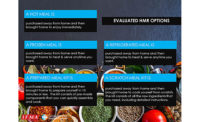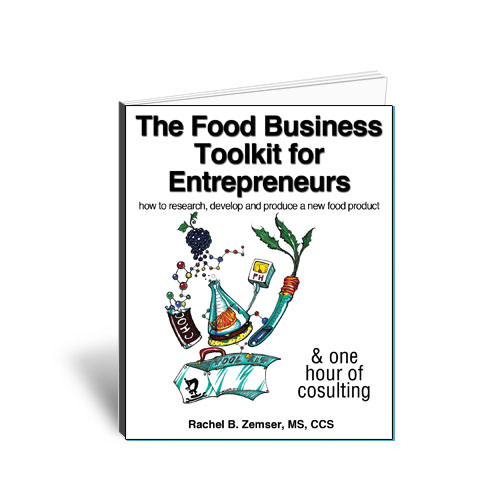Recipes for LTO Success
Innovation, new products and trendy ingredients can shape a menu




The pumpkin spice latte, the McRib, the $5 foot-long. Some limited-time offers (LTOs) are memorable affairs, where customer loyalty elevates them to full-time offerings or an eagerly anticipated annual craze.
Although there have been plenty of surprise success stories, the International Foodservice Manufacturers Association (IFMA) and Datassential, a Chicago-based foodservice researcher, joined forces to discover what makes for a successful (and mouthwatering) LTO.
Through IFMA’s Consumer Planning Program (CPP), these two firms surveyed 2,500 consumers about their eating habits, their last LTO eating occasion, what they want from special offers, and what they would like to see more.
Uniqueness
LTO’s give foodservice corporate chefs the opportunity to experiment with new flavor profiles and utilize premium ingredients to add something special to the menu. It’s important to note that LTOs don’t just give chefs an opportunity to get creative. Better put, today’s customers expect to see something special.
Uniqueness is a critical part of LTO success. Consumers say the desire to try something new and different is the primary motivator when they select a limited time offer. In fact, survey results show nearly one-third of consumers ordered the LTO on their most recent dining occasion—all due to the fact that it was something they had never tried before.
Consumers expect LTOs to stand apart from the regular menu, yet few restaurants actually meet that expectation. When asked about the last LTO they ordered, most consumers (57%) report that it was similar to regular menu items. Clearly LTOs are an area where consumers are willing to experiment, and the demand for unique offerings is not being met by operators. If an LTO is appealing, consumers will break away from their habitual order to try something unexpected. However, if they are going to try something new, they want it to be a unique experience.
Safe Experimentation
It’s easy to understand why chefs and operators may be hesitant to push things too far. Datassential’s extensive research on LTOs indicates that uniqueness can be a tricky thing. If a product is too unique, it might turn out to be polarizing, with few consumers willing to try it. However, there are many ways to meet consumer’s demand for uniqueness without becoming polarizing.
According to Datassential’s SCORES database, ethnic and global flavors are high ranking in key concept evaluation metrics (purchase intent and uniqueness). With ethnic cuisine increasingly being offered at commercial and non-commercial establishments, it’s no surprise that consumer’s tastes have gone global.
Incorporating global flavors into a traditional offering (such as ethnic sauce and toppings on a hamburger) is a way to encourage “safe experimentation.” This provides consumers the opportunity to try new ingredients and flavors through a carrier that they are familiar with. LTOs that focus on safe experimentation often achieve the ideal mix of experimental and familiar.
Seasonality
Eggnog, strawberry salads, softshell crab, and Pumpkin Spice are as reliable as the Winter, Spring, Summer, and Fall.
Although many establishments celebrate the seasons with LTOs, there is still a large, unmet demand for seasonal ingredients in limited time menu items. More than half (52%) of consumers surveyed believe that seasonal flavors should distinguish an LTO from the regular menu. However, only 30% of consumers say restaurants regularly meet this criterion. Clearly, menus can make room for several seasonal specials before consumer appetites are sated.
Operators may be reluctant to source seasonal products for an LTO for different reasons. Some may be concerned that if they source special products that have a limited growing season, they will disappoint customers with the brief offering. Others may be worried that customers will be unfamiliar with seasonal ingredients, and may be less likely to try products that feature Hatch chilies or morel mushrooms, for example.
Although some consumers are disappointed when seasonal LTOs end or prefer to order items off of the permanent menu, there is a large percentage of the population that is eager for seasonal fare and is willing to try.
Repetition
Consumers understand that certain products are only available at certain times (Hatch chilies) or that some products are most enjoyable during a specific season (eggnog). When items incorporate seasonal ingredients, research shows that customers do not necessarily expect a product to be added to the permanent menu. Even so, it’s clear that explanation, repetition, and long life-cycles are critical to keeping customers happy.
Customers might not expect an LTO to end up on the regular menu. However, operators could strengthen trust by helping consumers better understand why a particular item is only available for a limited time. Consumers predominately believe that restaurants offer LTOs simply for self-serving reasons (to test new menu ideas or create buzz)—rather than to offer hard-to-get products, premium items, or seasonal ingredients. Highlighting the limited availability of a product or the short growth season could show customers exactly why an LTO is only offered for a limited time. This could make the LTO appear even more appealing.
Repetition is an important part of LTO success. Nearly half of consumers (42%) believe that having an annually recurring LTO would boost the relevance of the menu item. Generating excitement about a recurring LTO also can build customer loyalty. In fact, on the last occasion that a consumer ordered an LTO, 17% said that they were purchasing a returning item that they had enjoyed during its previous cycle.
If a customer likes something enough, they will return to order it again. As a result, two to three months is perceived as the ideal length for a special offering, as it gives them adequate time to learn about it, try it out, and return to enjoy the LTO again if they are so inclined.
Additionally, consumers prefer knowing how long an LTO will be available. If operators make the “end date” part of the marketing messaging, it can encourage customers to try the LTO sooner rather than later. It also can help prevent disappointment, as customers are aware of the end date and won’t be surprised to find out that the item they were craving—was pulled from the menu.
Application Success
Consumers are most likely to purchase LTOs that center around unique burgers and pizzas. For operators that are starting to experiment with LTOs, these popular menu items may be a good place to begin, as burgers and pizza are applications where consumers prefer to try something new (55% and 64% respectively) over their existing favorites. In general, center-of-the-plate items are easier to promote as consumers typically visit a restaurant to enjoy a meal.
When LTOs are considered to be “extra,” they may require some additional marketing in order to spark trial. Applications such as appetizers, desserts, and beverages may not be part of every meal occasion and customers might need some encouragement to make a purchase. That said, marketing within the restaurant or store is often tempting as menu inserts are considered both an effective and preferred method of communication.
Oddly, even though consumers are less likely to order beverage-based LTOs, beverages are an area where consumers prefer new flavors over their existing favorites. This suggests that beverage occasions are habitual and it is difficult to make a customer aware of a new product or break them out of their routine.
Although advertising (via television ads and social media), in-store marketing, samples, and special deals all can be utilized to break the customer out of their routine, having the LTO available for a long run or as part of a recurring cycle may encourage trial. It gives consumers more of an opportunity to become familiar with the product, even if they’ve never tried it before.
Product Innovation
Most operators do not exclusively use LTOs to test out products for the permanent menu and do not consider an LTO a failure if it not become part of the regular offerings. Establishments often use LTOs to win business during a slow season or daypart and generate excitement among existing customers.
However, LTOs can be utilized as a testing ground for innovation for CPG products as well as full-time menu items. Popular, recurring LTOs could be rolled out as seasonal CPG items, giving consumers multiple ways to purchase their favorite products. Many restaurants brands have already branched out with CPG formats, such as Starbucks’s RTD Frappuccino, TGI Friday’s frozen snacks, and California Pizza Kitchen’s frozen pizzas and could use these formats to extend an LTO’s life cycle and create new ways for customers to purchase their favorite items that are only available for a limited time.
Retail foodservice—such as grocery stores and convenience stores—also have opportunities to develop experimental LTOs. Convenience store coffee programs and grocery delis often have a self-service model. This lets customers sample products or give themselves small servings. This may reduce the risk of trying new flavors or ethnic cuisines, so promotional messaging should be visible around hot and cold bars as well as self-serve beverage stations.
Samples, employee-recommendations, and product explanations that reduce risk—are all important to sparking trial. For commercial restaurants and on-site establishments, creating a risk-free path to purchase is critical. However, with interest in seasonal products, unique flavors, and global flavors, there is plenty of opportunity to create innovative products (both on the menu and as CPGs) that will delight consumers.
Originally appeared in the August, 2017 issue of Prepared Foods as Recipes for LTO Success.
Looking for a reprint of this article?
From high-res PDFs to custom plaques, order your copy today!








